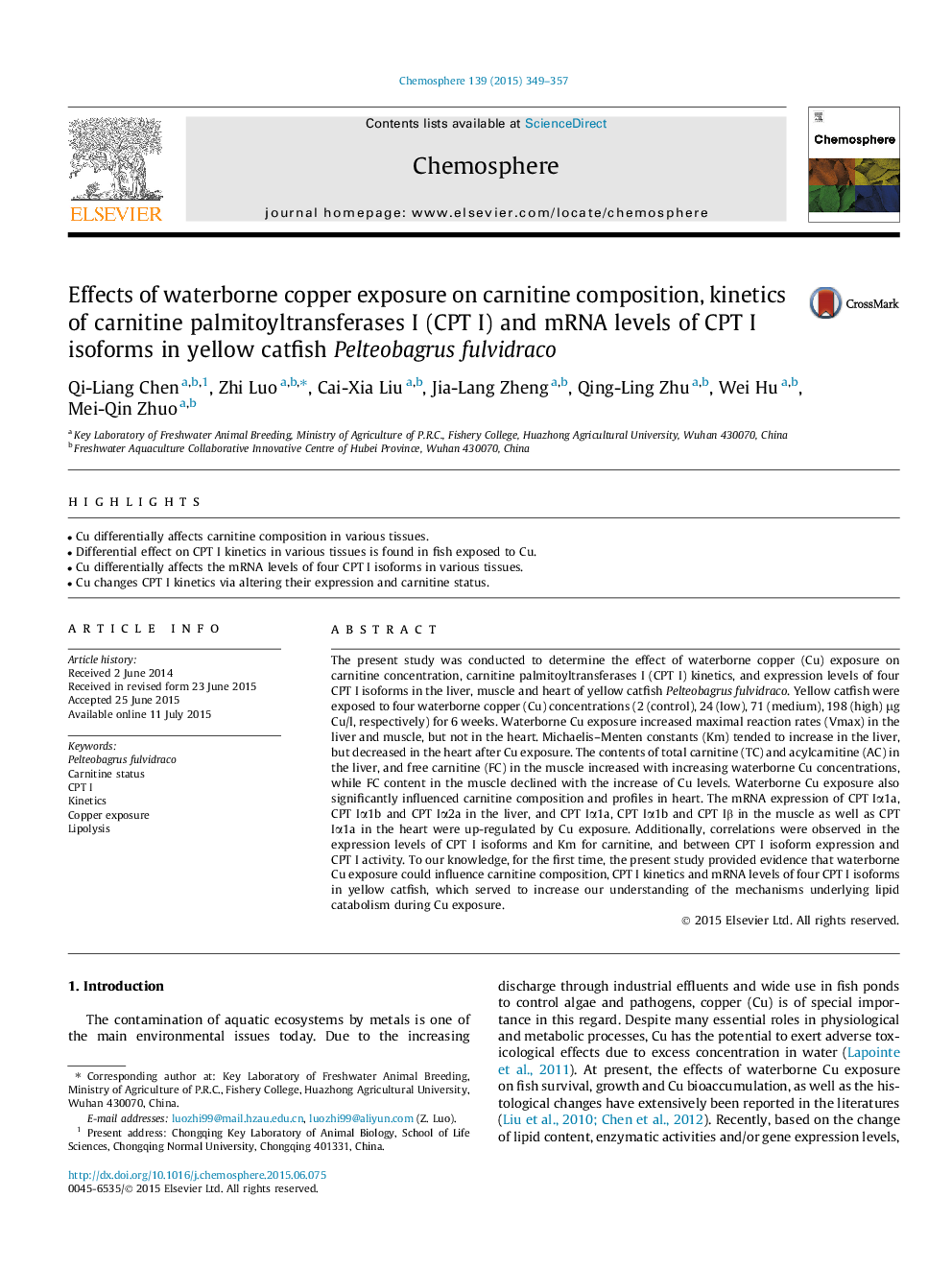| Article ID | Journal | Published Year | Pages | File Type |
|---|---|---|---|---|
| 4408166 | Chemosphere | 2015 | 9 Pages |
•Cu differentially affects carnitine composition in various tissues.•Differential effect on CPT I kinetics in various tissues is found in fish exposed to Cu.•Cu differentially affects the mRNA levels of four CPT I isoforms in various tissues.•Cu changes CPT I kinetics via altering their expression and carnitine status.
The present study was conducted to determine the effect of waterborne copper (Cu) exposure on carnitine concentration, carnitine palmitoyltransferases I (CPT I) kinetics, and expression levels of four CPT I isoforms in the liver, muscle and heart of yellow catfish Pelteobagrus fulvidraco. Yellow catfish were exposed to four waterborne copper (Cu) concentrations (2 (control), 24 (low), 71 (medium), 198 (high) μg Cu/l, respectively) for 6 weeks. Waterborne Cu exposure increased maximal reaction rates (Vmax) in the liver and muscle, but not in the heart. Michaelis–Menten constants (Km) tended to increase in the liver, but decreased in the heart after Cu exposure. The contents of total carnitine (TC) and acylcarnitine (AC) in the liver, and free carnitine (FC) in the muscle increased with increasing waterborne Cu concentrations, while FC content in the muscle declined with the increase of Cu levels. Waterborne Cu exposure also significantly influenced carnitine composition and profiles in heart. The mRNA expression of CPT Iα1a, CPT Iα1b and CPT Iα2a in the liver, and CPT Iα1a, CPT Iα1b and CPT Iβ in the muscle as well as CPT Iα1a in the heart were up-regulated by Cu exposure. Additionally, correlations were observed in the expression levels of CPT I isoforms and Km for carnitine, and between CPT I isoform expression and CPT I activity. To our knowledge, for the first time, the present study provided evidence that waterborne Cu exposure could influence carnitine composition, CPT I kinetics and mRNA levels of four CPT I isoforms in yellow catfish, which served to increase our understanding of the mechanisms underlying lipid catabolism during Cu exposure.
